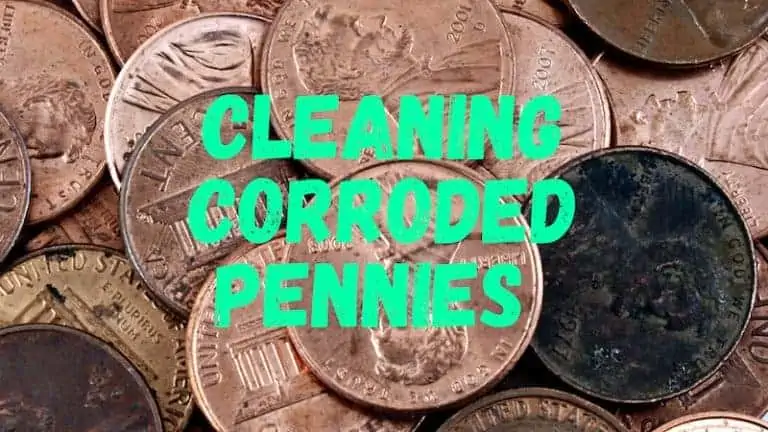How to Clean Gold Jewelry With Vinegar Without Any Damage
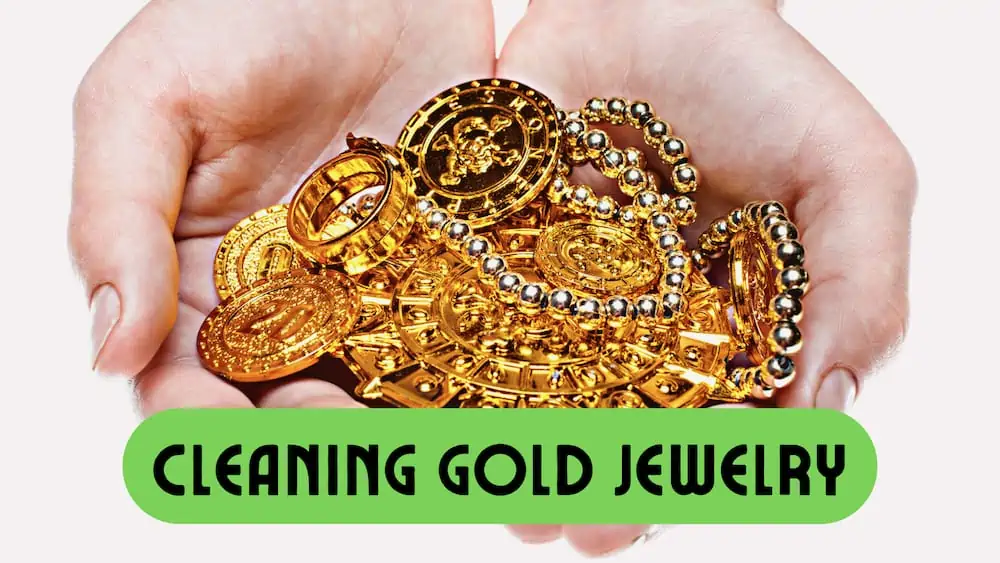
If you’ve ever discovered gold jewelry in the woods or beach before, then you likely stumbled upon jewelry that was quite dirty and in need of a little cleaning. So in this article, we’re going to teach you how to clean gold jewelry with vinegar, while also discussing how this process can be done without damaging your newfound treasure.
How to Clean Yellow Gold Jewelry with White Vinegar
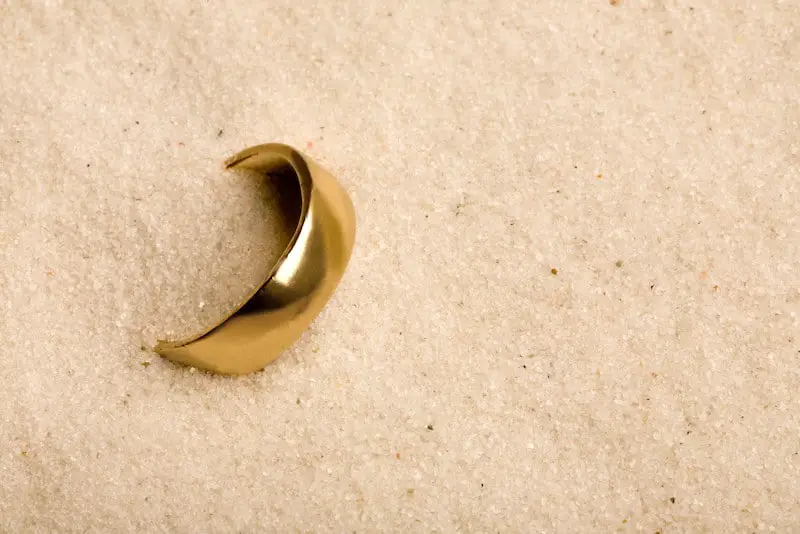
White vinegar is generally safe to use when cleaning gold if your gold is pure gold. White vinegar is made of 5 to 10 percent acetic acid and 90 to 95 percent water. It is antibacterial and anti-fungal, making it perfect for cleaning. Vinegar has a pH of about 2.4, making it mildly acidic. It is also easily accessible and can be found in nearly all grocery stores or hardware stores.
Care should be taken when handling vinegar, and any spilled on skin or clothing should be cleaned off immediately. White vinegar can also change the color of metals that are not pure gold. If your gold jewelry is 14 karat or 18 karat gold, or lower, it may not be solid gold. Many pieces of jewelry in this karat category are not real gold. Placing them in white vinegar could permanently discolor them. Solid gold placed in white vinegar will not harm the gold. It will leave the gold jewelry looking brighter and cleaner.
To clean plain gold jewelry, or gold jewelry with certain gemstones, with white vinegar is simple. Take a cup of white vinegar and submerge the jewelry in it. Let it soak for roughly 10 to 15 minutes. Gently agitate the solution every so often. Remove the items and gently scrub with a soft bristled brush, if necessary. Rinse well with clean water and allow the items to air dry. White vinegar is great at dissolving impurities on pure gold, making them fall away leaving your shiny gold items behind.
If the item is not pure gold, white vinegar will affect it differently. Brass materials will not change color in white vinegar, but it will make it easier to tell the item is brass once submerged in the solution. If you have a found what you think is a piece of gold ore with your metal detector, submerging it in white vinegar can also help you determine if the sample is indeed gold.
If it is iron pyrite, also known as Fool’s Gold, the sample will begin to form crystals when submerged in white vinegar. It may also give off a rotting smell. If the sample is mica, the white vinegar will bleach the iron staining that is making it look like gold.
- You Might Also Like: 10 Metal Detecting Tools to Find Gold and Silver
How to Clean White Gold with White Vinegar
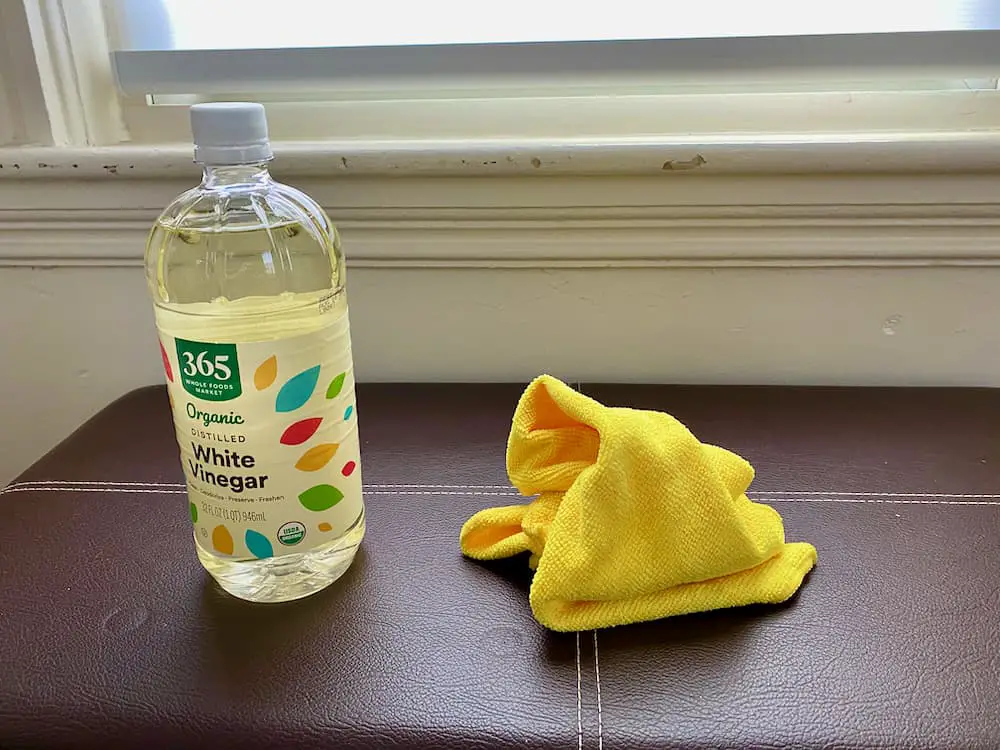
White gold is a combination or alloy of gold and one or more metals, typically nickel, manganese, or palladium. Most white gold items are plated with rhodium to increase their brilliance and shine and improve their durability. If your white gold items are turning yellow, the rhodium plating is wearing off and cleaning will make it worse. The only way to fix this is to have the item replated by a jeweler. If the white gold is turning black, it has likely been exposed to acid. This can be buffed away easily by a jeweler. If you do this at home, you run the risk of removing the rhodium plating.
White gold should never be cleaned with white vinegar at home. Vinegar is acidic and will damage the white gold. You should also avoid using toothpaste, Windex, and other often recommended home cleaning methods for white gold. The best way to clean white gold at home is with water and dish soap, or with a baking soda paste.
Simply fill a dish with water and a bit of dish soap. Soak the white gold item for a few minutes, gently scrubbing any difficult areas with a soft bristled brush. Rinse with clean water and let air dry. If your water has a high chlorine content, you may want to use bottled water for this processes as chlorine can damage white gold.
To clean white gold with baking soda, make a paste using baking soda and water. Scoop the paste onto a soft brush and gently scrub the jewelry item or items. Scrub very gently to avoid scratching the jewelry. Rinse the items very thoroughly with clean water and let air dry. To disinfect white gold without any stones, it can be safely coiled by placing in a soft bag, or on top of a rag at the bottom of a boiling pot and boiled for a few minutes. Isopropyl alcohol can also be applied gently with a cotton swab if preferred.
Never use vinegar to clean white gold with stones like pearls, opals, emeralds, coral, or bone, as it will damage the stones.
- You Might Also Like: Do Metal Detectors Detect Gold Fortune?
How to Clean Rose Gold with White Vinegar
Rose gold, like white gold, is a combination or alloy of gold and other metals, in this case copper. The most common rose gold is 75 percent gold and 25 percent copper, giving you 18 karat rose gold. White vinegar can be used to safely clean rose gold jewelry, if it does not have certain stones like pearls, opals, emeralds, coral, or bone.
Take a small container and add vinegar, enough to submerge your jewelry. Add several teaspoons of salt and stir until the salt dissolves completely. When the salt stops dissolving immediately, you have added enough salt. Place your rose gold jewelry into the container for a few seconds. Do not leave the jewelry in this solution for very long or it may corrode the metal.
Dip the jewelry, and immediately rinse with warm water. Repeat this processes as many times as necessary to clean your rose gold jewelry, being sure to completely rinse the solution after each dip. You can allow the jewelry to air dry to dry with a soft, clean microfiber cloth.
- You Might Also Enjoy: 50 Ways the Best Gold Metal Detectors in the World Rock
How to Clean Gold Jewelry with Apple Cider Vinegar
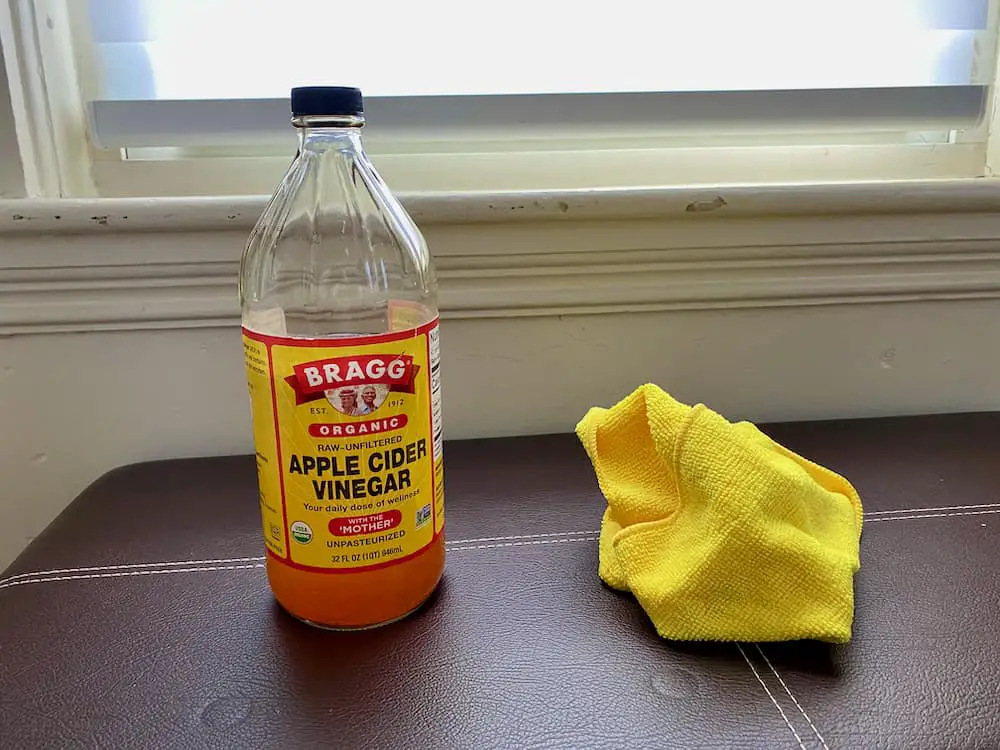
Apple cider vinegar can be used to clean gold jewelry if you do not have white vinegar on hand. Apple cider vinegar has a different composition to white vinegar that includes acetic acid, malic acid, citric acid, lactic acid, tartaric acid, pectin and trace amounts of several vitamins and minerals. The acidity of apple cider vinegar ranges from 2 to 3 on the pH scale, making it mildly acidic.
The method for using apple cider vinegar to clean gold jewelry is the same as white vinegar cleaning. Pour apple cider vinegar into a dish or container. Submerge the gold jewelry in the solution and soak for 10 to 15 minutes. Remove the jewelry and gently scrub with a soft bristled brush if necessary. Rinse with clean water and allow to air dry to dry with a soft, clean microfiber cloth.
- You May Also Like: How to Clean Corroded Pennies
Will Cleaning Harm Gold Jewelry?
Gold is a precious metal that is a deep orangey yellow color in its purest form. It is one of the most popular jewelry metals and can be mixed with other precious and non-precious metals for durability and strength. For instance, rose gold is regular gold alloyed with copper while white gold is regular gold alloyed with zinc, palladium, nickel, and silver. These also give white and rose golds their unique color. Most gold jewelry is anywhere from 10 to 24 karat, or gold plated.
It is important to determine what type of jewelry you have found prior to cleaning so you know the best cleaning method for the item. Check any rings inside for a stamp showing the karat, or on the clasp of any necklace or bracelet. You may need a magnifying glass or jeweler’s loupe. If you cannot find any identifying marks, you can always have the item identified by a professional jeweler.
Cleaning gold jewelry can be a delicate process. Gold is a delicate metal, and therefore, you must be gentle when cleaning it. Gold can withstand gentle cleaning, which helps keep it free of any elemental buildup and can extend the items life, while making it look brand new. The use of harsh chemicals or stiff bristled brushes can leave scratches and dents in the surface of gold jewelry. This will not only damage its appearance, but it can also damage its value.
- You May Also Like: How to Clean Wheat Pennies
Other Methods to Clean Gold Jewelry At Home
There are multiple ways you can clean any gold jewelry you have, or have found with your metal detector, at home safely. These methods are all gentle and should not leave any damaging marks on the jewelry. Always be sure to handle jewelry carefully, so it does not get damaged. If you have found a piece of jewelry while metal detecting and wish to sell the item, you will want it in tip top condition.
Dish Soap
This is one of my favorite cleaning methods. All you need is dish soap and clean water. Be sure you use simple dish soap, nothing with a lot of scent, or antibacterial agent in it. Grab a shallow dish or a small plastic container. Fill the container partially with warm water and some dish soap. Swish around creating bubbles. Place the jewelry you wish to clean inside the dish and soak for 15 to 30 minutes.
Take each item out of the soapy water and gently rinse. If the items are caked with dirt or grime, you may need to re-soak them, and use a soft toothbrush or soft bristled brush to clean away the dirt and grime. Once the items look clean, rinse with clean water, and allow the jewelry to air dry.
Jewelry Cleaning Liquid
There are many types of jewelry cleaners on the market. You should always start with the soap and water method first, to remove any dirt and debris on the items. The next step is a jewelry polish.
One great product, called Connoisseurs Jewelry Cleaner, features polymers to reduce the appearance of small scratches, a small touch up brush to clean settings, adds brilliance to diamonds and other precious stone settings, and works on platinum or gold jewelry. This type of cleaner includes a dip tray so you can lower the items into the solution. These cleaners are specifically made for gently cleaning gold jewelry.
Gold Polish
Gold polish is another great tool for cleaning gold jewelry. This type of polish is specifically made to clean all the tarnish off gold, leaving is shiny and new looking. You can use this polish with a soft, clean microfiber cloth. Simply dab a little polish on the rag and buff the gold jewelry. This is one of my favorite methods. You would be shocked at how much tarnish this polish pulls off jewelry you thought was already cleaned!
Gold polish is not abrasive enough to damage the gold, but abrasive enough to remove tarnish and stains. If you have a Dremel with an incredibly soft cloth attachment, you can use this to polish larger gold jewelry items, including rings, and it will remove a lot of tarnish. Then you can buff the items clean with a clean microfiber cloth.
Ammonia
Diamond jewelry can be soaked in a solution of 1 cup water and ¼ cup ammonia for 15 minutes. Then use a soft bristled brush to scrub any grime, focusing on the area of the setting around and underneath the diamond. Be sure to dilute the ammonia properly as undiluted ammonia can damage gold if left in the solution too long. Rinse well with clean water and allow to air dry.
Ultrasonic Cleaners
Ultrasonic cleaners are a great tool for cleaning gold jewelry. These cleaners use ultrasound waves and chemicals combines to create bubbles that cling to foreign particles, like dirt, oil, and other unwanted substances on jewelry.
High frequency waves are sent and pull the contaminants off the items. The bubbles collapse after they have attached to the contaminants and move tot eh surface of the chemical solution.
What Not to Use to Clean Gold Jewelry
When cleaning gold jewelry, you can find all manner of advice on the internet. Some of it is good advice, and some of it is not. Some places say using baking soda and vinegar can help. This is true if you are cleaning solid gold ore, or solid gold jewelry. But the process is not usually necessary.
If you have found a solid, 24 karat gold ring with no stones with your metal detector and it is severely coated in soil, debris, and damaged by time, you can use a baking soda paste, followed by a quick soak in white vinegar. Rinse thoroughly for a gleaming shine.
Never use harsh acids to clean gold jewelry. Acids harsher than vinegar can damage the gold or even strip away layers of the material. Never use a stiff bristled brush to scrub your gold as gold is a very delicate material and will scratch easily. Always use a soft bristled brush or soft, clean microfiber cloth only.
Now, if you’re interested in learning how to clean gold jewelry with toothpaste, well, let’s dive a little deeper into this. A common myth is that toothpaste is a good cleaner for gold jewelry. This is a false claim. Toothpaste can damage gold, silver, diamonds, and gemstones. Toothpaste is abrasive and has a hardness of between 3 and 4 on Mohs Hardness Scale. Gold is a soft metal and can be easily damaged by abrasive substances like toothpaste. The chemicals found in toothpaste can also have a corrosive effect on the metals. Gemstones in gold jewelry can also be damaged by the abrasiveness of toothpaste. Toothpaste should be avoided when cleaning jewelry.
Cleaning Gold Plated Jewelry At Home
Gold Plated Jewelry, including white gold and rose gold jewelry, can be cleaned at home. The best method for cleaning plated gold jewelries is with dish soap and water. Because these are only plated with gold, they can easily be damaged by using chemicals or with stiff bristled brushes. These items can be soaked in dish soap, then gently rinsed. If there is a lot of dirt or build up on them, you can use a very soft bristled brush on them.
Anything harsher can remove the plating of the item, exposing the metal underneath. Clean these items one at a time so they are not bouncing off one another causing damage to the plating. Do not clean them with solid gold jewelry, or any other type of metal.
How to Get Gold Jewelry Professionally Cleaned
You can always take your found jewelry to a professional jeweler for cleaning. Pricing will depend upon the item, its condition, and the material it is made of. Gold jewelry, as I mentioned, is delicate. It must be cleaned using delicate techniques. You will need to contact jewelry stores in your local area to determine pricing and availability on having gold jewelry professionally cleaned.
They will want a description of the items, including the condition they are in, before they can give you a price. They may even want you to bring them into their store to see them before they can give you an accurate price.
Conclusion
There are several methods for cleaning gold jewelry you have found while metal detecting. The best, safest, and most tried and true method for cleaning jewelry is dish soap and water. This method is simple and will not damage the items. Clean the items one at a time, as gold is a very soft metal and if more than one item is banging around in a dish it can scratch the other items. If your jewelry is gold plated, only use soap and water, and never any of the other cleaning methods on this list.
For more stubborn tarnish and stains, you can use white vinegar, ammonia, jewelry polish, or jewelry cleaner. All of these are safe to use on solid gold jewelry. Do not let them soak for too long or the gold can be damaged. Always dilute ammonia when using to clean jewelry. Follow all directions when using a store-bought jewelry cleaner. If you are unsure what type to use, contact your local jeweler for guidance.
You can always take your gold jewelry to a professional jewelry for cleaning. This may cost a little bit more than doing it yourself at home, but they are professionals and know exactly how to clean gold jewelry safely.
One of the best and safest methods for cleaning gold jewelry, although the more expensive options, is an ultrasonic cleaner (please see the video above). These are great for use on not only gold jewelry, but many other items you uncover with your metal detector. These are safe for use on coins, jewelry, and many relics.
This article was written by Malory and edited by Michael.
- If you enjoyed this article, please “like” our brand new Facebook page!
You Also Might Like:
